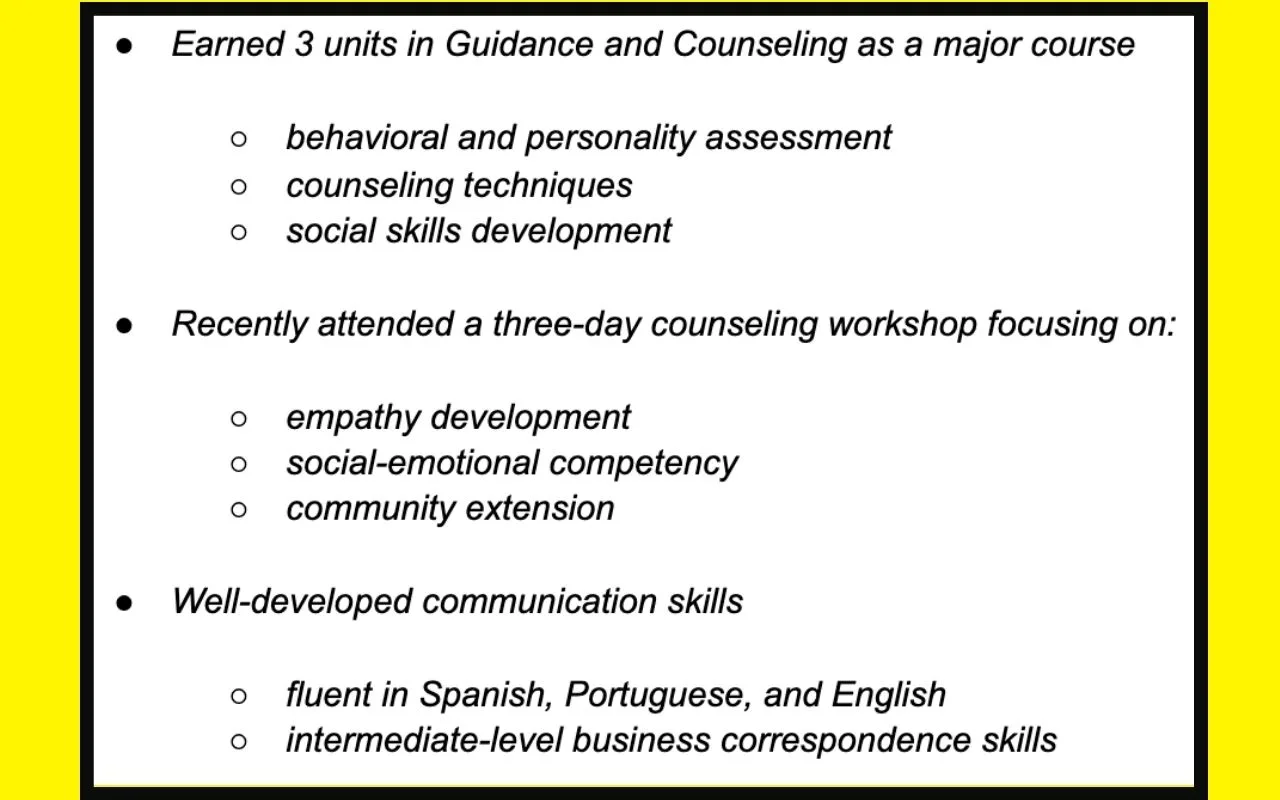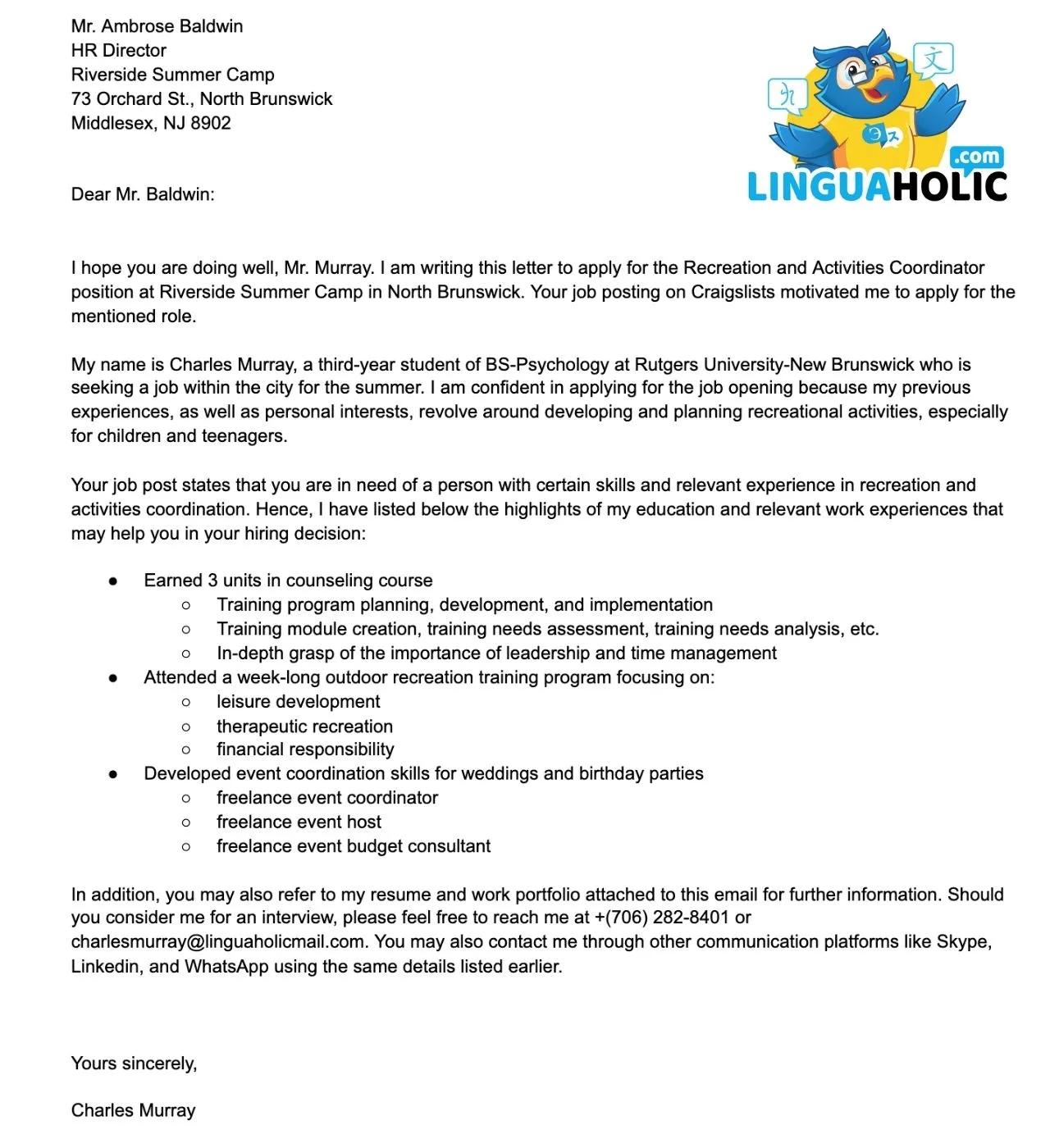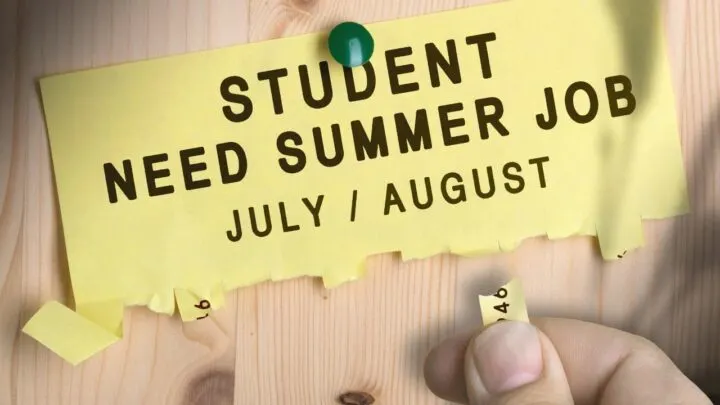Summer is fast approaching, so you decide that you want to get a temporary job to fill your pocket with extra cash and to gain some work experience too.
You start thinking about what your options are by consulting with your friends and relatives who have been employed in the summer before.
You already have some initial understanding of what working for the summer entails because of the stories you’ve heard. But now, your main concern is writing a cover letter.
This post elaborates on the nuances of writing a cover letter for a summer job, so please read on ‘til the end to get a full grasp.
Let’s begin with an overview.
How do we write a cover letter for a summer job?
- Write the inside address.
- Write a salutation.
- Start with a purpose statement.
- Include the job-information source.
- Introduce yourself.
- Express job interest.
- List key achievements.
- Include enclosure/attachment information.
- Prompt an interview and provide contact details.
- Close the letter and sign.
The anatomy of a cover letter for a summer job
Cover letter writing is not something you can just do leniently because an effective cover letter could make or break your application.
A cover letter is one of the fundamental tools that allow employers to get to know their applicants and decide whether to reject the application.
In writing a cover letter, either for a summer job or a regular one, the following parts are essential to secure an interview:
Inside address
The inside address is the target recipient’s complete address, which can be found at the top-left part of your cover letter.
Without the inside address information, your letter may just easily get tossed around and receive little to no attention from the employer.
Meanwhile, being able to include the inside address also demonstrates research skills and attention to detail, and written communicative competence.
The inside address specifically includes the complete name of the recipient, the organizational name, and the complete address of the organization’s office.
Here is an example of a complete inside address:
Example:
Ms. Beatrice Collins
Hiring Manager
Lakeview Waterpark
4080 Columbia Road, Suite 8
Philadelphia, DE 19108
Proper punctuation is needed in writing the inside address since it further communicates attention to detail and communicative skills.
You may refer to our other text covering how to use commas in addresses to learn more about appropriate punctuation usage.
Salutation or greeting
The next item that comes after the inside address is the salutation or greeting, which needs to be a formal one in this type of correspondence.
Formal salutations include “dear” and “to” and exclude “hi,” “hello,” “what’s up,” and “how’s it going”; “dearest” has to be avoided too because of its overly personal undertone.
The salutation or greeting is used by the recipient as a confirmatory signal that the letter is addressed to him or her and not to anybody else.
Colons and commas after salutations are also tricky elements to use, so it is also recommended to learn where exactly the punctuation mark goes to demonstrate written language skills.
In a cover letter, a colon is a more appropriate choice than a comma because it suggests more formality and politeness.
You may choose any of the following example salutations below in your cover letter:
Example 1:
Example 2:
Example 3:
Intent statement
Before the intent or purpose statement, you must ideally start with a formal greeting expression like “I hope all is well with you” or “I hope you are doing well” to initiate a positive atmosphere.
The intent statement explains the overall purpose of the cover letter, which, in particular, is simply the application for the job role that you have chosen.
In writing the intent statement, it is important to state the specific position you are applying for, as well as the complete name of the target organization.
Your purpose statement may be structured like the following examples:
Example 1:
Example 2:
Source of job information
The source of job information refers to the platform on which the job advertisement is posted, such as the most popular ones like Craigslist and Linkedin.
Alternatively, you may also directly reply to a job post to a Craigslist job posting by following a few easy-to-follow steps.
Of course, job sources are not only limited to online platforms because you may also indicate learn about a job vacancy through a connection, such as someone who works or has worked in the organization.
If you write a person as your job information source, make sure he or she does not have a negative record in the organization you are applying for because this will be detrimental to your application.
Here are some examples explaining the job source information:
Example 1:
Example 2:
Self-introduction
After writing the informational source, you may now proceed with providing the basic details about yourself, such as your complete name and educational background.
You can write general details on work experience here because you will be writing this part in more detail a bit later.
Here are some ways of introducing the self:
Example 1:
Example 2:
Job interest statement
Explicitly stating that you are interested in the position you are applying for enables the employer to think that you might be a good fit for the role.
Also, it is essential that the job interest statement demonstrates enthusiasm on the job opening rather than a desperate attempt to land a job.
The job interest statement needs to be simple in the sense that it is easy to understand and easy to back up with a further explanation, such as the following:
Example 1:
Example 2:

Key achievements and/or experiences (bulleted)
After the statement of interest, it is critical to also write down certain achievements and previous experiences to concretize your claim.
If you have had either formal or informal work experience, awards, and relevant non-academic affiliations, make sure to include these details here.
As a student applicant without any previous job experience, you may specifically include training programs, workshops, seminars, and relevant courses that you have taken in the past.
Relevant research works can also be included in resumes and cover letters especially if you are applying for a summer job role in the academic setting.
Furthermore, writing this part in bullets rather than sentences improves readability, thereby decreasing the amount of time a reader needs to go over your cover letter.
Here’s how you can do that:
Example:
Listed below are the highlights of my education, training, and work experiences that may help you in your hiring decision:

Enclosure/attachment information
When you submit a cover letter for a summer job or any regular role, it is ideal to provide work samples and other relevant credentials to your target employer to make the process smoother.
To do this, you cannot just provide the relevant documents without informing the addressee beforehand to make sure that he or she sees them.
Hence, you must write down a short explanatory statement regarding enclosures and attachments in your letter.
Here are a couple of ways to do that:
Example 1:
Example 2:
Call to action and contact information
The second to the last part includes a call-to-action statement as well as the most contact details to assist future correspondence.
A call-to-action statement is something that would demonstrate your willingness to be interviewed by the employer.
Meanwhile, the active contact details refer to your active email address, mobile number, as well as other communication details that can be used by the employer to conveniently reach out to you.
You may structure these parts of the cover letter as follows:
Example 1:
Example 2:
Valediction remark and signature
Last but not least are the valediction or closing remark and the signature. The former needs to have a formal and respectful connotation, and the latter needs to be the complete name of the applicant.
Valediction remarks are useful in officially ending the cover letter, while the signature is important for easy identification purposes.
In choosing the appropriate closing remark, it is advisable to use expressions with formalistic tones such as “Sincerely” and “Respectfully.”
This also means that personal and email-like ones like “Warmest regards” and “Best wishes” are better avoided and reserved in other less formal contexts.
Here are some examples:
Example 1:
Sincerely,
Jessica Brown
Example 2:
Respectfully,
Philip Hernandez
Sample cover letter for a summer job
To clearly see how all the parts relate to one another in a letter, please refer to the sample cover letter below:

Frequently Asked Questions on “How to write a summer job cover letter”
How do I write a cover letter for a seasonal job?
To write a cover letter for a seasonal job, you must indicate that you are specifically applying for the seasonal rather than the regular role. Make sure to only include and highlight key competencies that are relevant to the job role.
Should I submit a portfolio and resume together with the cover letter?
Ideally speaking, a resume and some work samples must be submitted either as enclosures or attachments to your cover letter because these documents smooth out the application process by helping employers decide faster.
What do we need to include in a summer job cover letter?
The most important parts of a summer job application letter include the particular role you are applying for, your relevant key competencies concerning the job opening, and your most active contact details.
Conclusion
All in all, writing an effective cover letter entails certain parts that are indispensable in the context of formal correspondence.
These parts have been critically elaborated in this post together with specific examples; hence, you should already be confident enough by this point to begin writing your cover letter.
See you in our next post!

Hey fellow Linguaholics! It’s me, Marcel. I am the proud owner of linguaholic.com. Languages have always been my passion and I have studied Linguistics, Computational Linguistics and Sinology at the University of Zurich. It is my utmost pleasure to share with all of you guys what I know about languages and linguistics in general.

